Flowers That Look Like Tulips: A Detailed Exploration
Introduction
Tulips are some of the most beloved flowers in the world, known for their simple yet elegant shapes, vibrant colors, and symbolic meanings ranging from perfect love to royalty. However, many other flowers share similarities with tulips in appearance and sometimes even in care requirements. This article explores a variety of Flowers That Look Like Tulips, delving into their characteristics, growing conditions, unique features, and even a bit of history. Whether you’re a gardening enthusiast or a flower lover, this guide will help you discover new blooms that can bring the same joy and beauty as tulips.
1. Ranunculus
Description: Ranunculus flowers are often mistaken for tulips due to their similar layered petals and growth habits. They exhibit a dazzling array of colors, such as pink, red, yellow, orange, and white. The blooms are lush and full, with a delicate, almost paper-like texture that gives them an air of sophistication.
Growing Conditions: Ranunculus thrive in well-drained soil, requiring full sun to partial shade. They prefer cooler climates and bloom in the spring, much like tulips. For the best results, plant the bulbs in the fall, ensuring a spectacular spring display. Ranunculus bulbs are planted about 2 inches deep and 4-6 inches apart, and they require consistent watering but should never be waterlogged.
Unique Features: Ranunculus flowers are highly favored in the floral industry, especially in wedding bouquets and sophisticated arrangements due to their romantic and refined appearance. They also have a longer vase life compared to tulips, lasting up to 10 days if properly cared for. This makes them a popular choice for both fresh-cut flowers and ornamental garden plants. They symbolize radiant charm and attractiveness, which adds to their allure in romantic and celebratory settings.
Origins and Varieties: Native to Central Asia, ranunculus has been cultivated for centuries, especially in regions like Turkey and the Middle East. Varieties such as the Tecolote Giant and the Bloomingdale series are popular for their large, double blooms. The Persian buttercup is another variety often grouped with ranunculus, known for its bright, saturated colors.
2. Anemones
Description: Anemones, also known as windflowers, bear a striking resemblance to tulips, especially in their cup-shaped bloom varieties. These flowers come in shades of purple, pink, blue, red, and white, with a central disk often featuring a contrasting color, adding to their visual appeal.
Growing Conditions: Anemones prefer well-drained soil and can grow in both full sun and partial shade. They are typically planted in the fall and bloom in early spring. Anemones are hardy in USDA zones 7-10. Their corms should be soaked in water for a few hours before planting to help them establish quickly. They do best in areas with mild winters and cool, moist springs.
Unique Features: Anemones are known for their resilience and ability to withstand windy conditions, hence their nickname “windflower.” They have a long blooming season, often extending from early spring to late summer, depending on the variety. In the language of flowers, anemones symbolize protection, anticipation, and sometimes the fleeting nature of love and life.
Origins and Varieties: Anemones are native to temperate and subtropical regions around the world, including parts of North America, Europe, and Asia. The Anemone coronaria, also known as the poppy anemone, is one of the most popular species and comes in various cultivars like ‘De Caen’ and ‘St. Brigid.’ These varieties are particularly valued for their vivid colors and robust growth.
3. Peonies
Description: Peonies, particularly the single and semi-double varieties, can look remarkably similar to tulips. Their large, cup-shaped blooms are available in a spectrum of colors, including pink, red, white, and yellow. The lush petals and sweet fragrance make them a favorite in gardens and floral arrangements alike.
Growing Conditions: Peonies require well-drained soil and full sun to partial shade. They thrive in cooler climates and are best planted in the fall. Peonies generally bloom in late spring to early summer. They are hardy in USDA zones 3-8. When planting, it’s important to place the root division with the eyes (buds) no more than 2 inches below the soil surface to ensure proper blooming.
Unique Features: Peonies are known for their longevity, with some plants living for over 100 years if well cared for. Their large, showy blooms make them a staple in wedding bouquets and formal arrangements. They are also revered in various cultures; in Chinese culture, for example, peonies are known as the “king of flowers” and symbolize honor, prosperity, and good fortune.
Origins and Varieties: Peonies have a long history of cultivation, especially in China, where they have been grown for over 2,000 years. Herbaceous peonies and tree peonies are the two main types, with herbaceous varieties dying back to the ground each winter, while tree peonies have woody stems that remain above ground. Popular varieties include ‘Sarah Bernhardt,’ known for its large, double pink blooms, and ‘Bowl of Beauty,’ which features a striking contrast between its pink outer petals and creamy white center.
4. Iceland Poppies (Papaver nudicaule)
Description: Iceland poppies have delicate, cup-shaped flowers that can resemble tulips, especially when they are just opening. They come in a variety of colors, including orange, yellow, pink, and white. The petals are thin and almost translucent, giving them a delicate appearance that contrasts beautifully with their vivid hues.
Growing Conditions: Iceland poppies prefer well-drained soil and full sun. They are typically grown as annuals or biennials and bloom in late spring to early summer. These poppies thrive in cooler climates and are hardy in USDA zones 2-7. They are best started from seed, sown directly in the garden where they are to grow, as they do not transplant well.
Unique Features: Iceland poppies are known for their vibrant colors and delicate, crinkled petals. They are often used in wildflower gardens and are excellent for attracting pollinators such as bees and butterflies. These poppies have a relatively short lifespan as cut flowers but make a striking addition to garden beds and borders.
Origins and Varieties: Iceland poppies are native to subarctic regions of Europe, Asia, and North America. They have been cultivated for ornamental purposes for centuries. Varieties such as ‘Champagne Bubbles’ and ‘Pastel Meadows’ are particularly popular for their mix of soft and vibrant colors.
5. Persian Buttercups (Ranunculus asiaticus)
Description: Persian buttercups are closely related to ranunculus and share many of the same characteristics. The blooms are layered and full, with a delicate, papery texture that gives them an elegant appearance similar to that of tulips. Persian buttercups are available in a wide range of colors, including pink, red, yellow, orange, and white.
Growing Conditions: Persian buttercups prefer well-drained soil and full sun to partial shade. They are typically planted in the fall and bloom in the spring, much like tulips. They are hardy in USDA zones 8-11. To plant, place the tubers (often referred to as “claws”) about 2 inches deep with the claw side down.
Unique Features: Persian buttercups are a favorite in the cut flower industry due to their long vase life and vibrant colors. They are also easy to grow and care for, making them a popular choice for both novice and experienced gardeners. In addition to their beauty, Persian buttercups are also a symbol of radiant charm and attractiveness.
Origins and Varieties: Persian buttercups are native to the eastern Mediterranean region and parts of Asia. They have been cultivated for centuries, particularly in Turkey, where they are known as “Buttercup of the Orient.” Popular varieties include the ‘Tecolote’ series, known for its large, double blooms, and the ‘Bloomingdale’ series, which offers a mix of colors.
6. Lisianthus (Eustoma)
Description: Lisianthus flowers are often compared to tulips due to their similar shape and vibrant colors. The blooms are available in shades of pink, purple, white, and blue, with a delicate, ruffled appearance and a soft texture that make them a popular choice for floral arrangements.
Growing Conditions: Lisianthus prefers well-drained soil and full sun to partial shade. They are typically grown as annuals or biennials and bloom in the summer. Lisianthus are hardy in USDA zones 8-10. They can be started from seed indoors, about 10-12 weeks before the last frost date, to give them a head start before transplanting outdoors.
Unique Features: Lisianthus flowers are prized for their long-lasting blooms and elegant appearance. They are often used in wedding bouquets, boutonnieres, and other floral arrangements where a touch of sophistication is desired. In the language of flowers, lisianthus symbolizes appreciation and gratitude, making them a meaningful gift for loved ones.
Origins and Varieties: Native to the southern United States, Mexico, and the Caribbean, lisianthus has been cultivated for ornamental purposes since the early 20th century. Popular varieties include ‘Arena’ and ‘Rosanne,’ which are known for their robust growth and double blooms.
7. Crown Imperial (Fritillaria imperialis)
Description: Crown imperial flowers have a unique appearance that can be reminiscent of tulips, especially in their early stages of blooming. The flowers are bell-shaped and hang downwards, with a crown of foliage at the top. They come in shades of orange, red, and yellow, adding a bold splash of color to any garden.
Growing Conditions: Crown imperial prefers well-drained soil and full sun. They are typically planted in the fall and bloom in the spring. Crown imperial is hardy in USDA zones 5-8. When planting, place the bulbs about 6 inches deep and 8-12 inches apart. They require consistent moisture during their growing season but should not be overwatered.
Unique Features: Crown imperial flowers are known for their dramatic appearance and unique growth habit. They have a strong, musky fragrance that can deter pests like deer and rodents. Crown imperials are often used as focal points in garden beds and borders due to their tall stature and striking blooms.
Origins and Varieties: Crown imperial is native to mountainous regions of Turkey, Iran, and Afghanistan. It has been cultivated in Europe since the 16th century and was once considered a symbol of wealth and power. Varieties such as ‘Rubra Maxima’ and ‘Lutea Maxima’ are popular for their vibrant colors and robust growth.
8. Double Daffodils (Narcissus)
Description: Double daffodils have a layered, full appearance that can resemble tulips, especially the double varieties. The blooms are available in shades of yellow, white, and orange, with a sweet fragrance and a delicate texture that make them a favorite in spring gardens.
Growing Conditions: Double daffodils prefer well-drained soil and full sun to partial shade. They are typically planted in the fall and bloom in the spring. Double daffodils are hardy in USDA zones 3-8. When planting, place the bulbs 6 inches deep and 4-6 inches apart. They require consistent moisture during their growing season but should be allowed to dry out after blooming.
Unique Features: Double daffodils are known for their long-lasting blooms and sweet fragrance. They are often used in spring gardens and floral arrangements, where their bright colors and cheerful appearance bring a touch of sunshine to any setting. In the language of flowers, daffodils symbolize new beginnings, making them a popular choice for celebrating life events such as weddings and birthdays.
Origins and Varieties: Daffodils are native to Europe, particularly the Iberian Peninsula. Double daffodils have been cultivated for centuries, with varieties such as ‘Tahiti’ and ‘Replete’ being particularly popular for their full, ruffled blooms.
9. Butterfly Ranunculus
Description: Butterfly ranunculus is a unique variety of ranunculus that has a more delicate, airy appearance compared to the traditional ranunculus. The blooms are smaller and more open, resembling tulips in their shape and structure. They come in a range of colors, including pink, yellow, and white, with a soft, pastel-like quality.
Growing Conditions: Butterfly ranunculus prefers well-drained soil and full sun to partial shade. They are typically planted in the fall and bloom in the spring, much like other ranunculus varieties. Butterfly ranunculus is hardy in USDA zones 8-11. The tubers should be planted about 2 inches deep with the claws facing down.
Unique Features: Butterfly ranunculus flowers are known for their delicate appearance and vibrant colors. They are often used in wildflower gardens, where their light, airy blooms add a touch of whimsy and elegance. Butterfly ranunculus is also known for attracting pollinators such as bees and butterflies, making them a valuable addition to any garden.
Origins and Varieties: Butterfly ranunculus is a relatively recent introduction to the horticultural world, with varieties such as ‘Elegant’ and ‘Mache’ being particularly popular for their soft, pastel colors and delicate blooms.
10. Japanese Anemone (Anemone hupehensis)
Description: Japanese anemones have delicate, cup-shaped blooms that can resemble tulips, especially in their early stages of blooming. The flowers are available in shades of pink, white, and purple, with a soft, delicate appearance and a sweet fragrance that make them a popular choice for late-season gardens.
Growing Conditions: Japanese anemones prefer well-drained soil and partial shade. They are typically planted in the spring and bloom in late summer to early fall, providing a burst of color when many other flowers have finished blooming. Japanese anemones are hardy in USDA zones 4-8. They benefit from being planted in a sheltered location, as their tall stems can be prone to wind damage.
Unique Features: Japanese anemones are known for their resilience and long-lasting blooms. They are often used in perennial gardens and woodland gardens, where their delicate flowers provide a beautiful contrast to the rich greens of late summer foliage. In the language of flowers, anemones symbolize anticipation and protection, making them a meaningful addition to any garden.
Origins and Varieties: Japanese anemones are native to China, but they have been cultivated in Japan for centuries, hence their common name. Varieties such as ‘Honorine Jobert’ and ‘September Charm’ are particularly popular for their large, showy blooms and long blooming season.
11. Alstroemeria (Peruvian Lily)
Description: Alstroemeria, also known as Peruvian lilies, have a similar shape to tulips with their trumpet-like blooms. They come in a variety of colors, including pink, purple, yellow, orange, and white. The petals often have unique markings and patterns, adding to their visual appeal.
Growing Conditions: Alstroemeria prefers well-drained soil and full sun to partial shade. They are typically planted in the spring and bloom in the summer, with some varieties continuing to bloom into the fall. Alstroemeria is hardy in USDA zones 7-10. They should be planted about 6 inches deep and spaced about 12 inches apart.
Unique Features: Alstroemeria flowers are known for their long-lasting blooms and unique markings, which can include spots, streaks, and contrasting colors. They are often used in floral arrangements and bouquets, where their vibrant colors and interesting patterns add a touch of exotic beauty. In the language of flowers, alstroemeria symbolizes friendship, making them a popular choice for gifting.
Origins and Varieties: Alstroemeria is native to South America, particularly in Chile, Brazil, and Peru. It was named after the Swedish botanist Baron Claus von Alstroemer, who brought the plant to Europe in the 18th century. Popular varieties include ‘Inticancha’ and ‘Princess Lilies,’ known for their compact growth and prolific blooming.
12. Hellebores (Helleborus)
Description: Hellebores, also known as Lenten roses, have a similar shape to tulips with their cup-shaped blooms. They come in a range of colors, including pink, purple, white, and green, with some varieties featuring speckled or mottled patterns. The petals are thick and have a waxy texture, giving them a robust appearance.
Growing Conditions: Hellebores prefer well-drained soil and partial to full shade. They are typically planted in the fall and bloom in late winter to early spring, often pushing through the snow to provide an early splash of color in the garden. Hellebores are hardy in USDA zones 4-9. They benefit from rich, organic soil and regular watering during dry periods.
Unique Features: Hellebores are known for their early blooming period and resilience in cold weather. They are often used in shade gardens, woodland gardens, and winter gardens, where their hardy blooms provide a welcome contrast to the otherwise dormant landscape. Hellebores are also deer-resistant and long-lived, often thriving for decades in the same spot.
Origins and Varieties: Hellebores are native to Europe and Asia, with a long history of cultivation dating back to ancient times. They were once used in folk medicine and were believed to have magical properties. Today, varieties such as ‘Double Ellen’ and ‘Ivory Prince’ are popular for their large, double blooms and striking colors.
13. Parrot Tulips
Description: Parrot tulips are a unique variety of tulip that have ruffled, fringed petals resembling the feathers of a parrot. They come in a range of colors, including pink, red, yellow, and white, often with striking color combinations and patterns. The blooms are large and showy, making them a favorite among gardeners looking to add a touch of drama to their spring displays.
Growing Conditions: Parrot tulips prefer well-drained soil and full sun. They are typically planted in the fall and bloom in the spring, with their ruffled petals adding an exotic touch to the garden. Parrot tulips are hardy in USDA zones 3-8. They should be planted about 6 inches deep and spaced about 4-6 inches apart.
Unique Features: Parrot tulips are known for their unique, ruffled petals and vibrant colors. They are often used in spring gardens, where their bold appearance creates a striking focal point. Parrot tulips are also popular in floral arrangements, where their unusual shapes and colors add a touch of exotic beauty.
Origins and Varieties: Parrot tulips have been cultivated since the 17th century, with their origins likely tracing back to mutations of the single late tulips. Popular varieties include ‘Apricot Parrot’ and ‘Black Parrot,’ known for their rich colors and dramatic petals.
14. Tuberous Begonias
Description: Tuberous begonias have large, cup-shaped blooms that can resemble tulips, especially the double varieties. They come in a variety of colors, including pink, red, yellow, and white, with thick, waxy petals that give them a luxurious appearance.
Growing Conditions: Tuberous begonias prefer well-drained soil and partial shade. They are typically planted in the spring and bloom in the summer, continuing to flower until the first frost. Tuberous begonias are hardy in USDA zones 8-11. They should be planted about 2 inches deep and spaced about 12 inches apart.
Unique Features: Tuberous begonias are known for their large, showy blooms and long-lasting flowers. They are often used in container gardens, hanging baskets, and shaded garden beds, where their vibrant colors and lush foliage create a striking display. Tuberous begonias also make excellent cut flowers, adding a touch of elegance to indoor arrangements.
Origins and Varieties: Tuberous begonias are native to the Andes mountains of South America and have been cultivated for ornamental purposes since the 19th century. Popular varieties include ‘Nonstop’ and ‘Illumination,’ known for their continuous blooming and wide range of colors.
15. Camellias
Description: Camellias have large, cup-shaped blooms that can resemble tulips, especially the double varieties. They come in a range of colors, including pink, red, white, and yellow, with thick, waxy petals that give them a robust appearance.
Growing Conditions: Camellias prefer well-drained, acidic soil and partial to full shade. They are typically planted in the fall and bloom in the winter to early spring, providing a splash of color when few other flowers are in bloom. Camellias are hardy in USDA zones 7-9. They should be planted with their root ball slightly above ground level to prevent waterlogging.
Unique Features: Camellias are known for their large, showy blooms and long-lasting flowers. They are often used in shade gardens, woodland gardens, and as foundation plantings, where their glossy, evergreen foliage provides year-round interest. Camellias are also a symbol of love and admiration, making them a popular choice for gifting and floral arrangements.
Origins and Varieties: Camellias are native to East Asia, particularly China, Japan, and Korea, where they have been cultivated for centuries. They have a rich cultural history and are often associated with tea production, as the Camellia sinensis species is the source of tea leaves. Popular ornamental varieties include ‘Debutante’ and ‘Nuccio’s Pearl,’ known for their large, double blooms and striking colors.
16. Clivias
Description: Clivias have large, trumpet-shaped blooms that can resemble tulips, especially in their early stages of blooming. They come in shades of orange, yellow, and red, with thick, waxy petals that give them a robust appearance.
Growing Conditions: Clivias prefer well-drained soil and partial to full shade. They are typically planted in the spring and bloom in the summer, with their long-lasting flowers adding a touch of tropical beauty to shaded garden beds and containers. Clivias are hardy in USDA zones 9-11. They should be planted with their crown slightly above the soil level to prevent rot.
Unique Features: Clivias are known for their resilience and long-lasting blooms. They are often used in shade gardens and container gardens, where their bright colors and lush foliage create a striking display. Clivias are also drought-tolerant and can thrive in low-light conditions, making them an excellent choice for indoor cultivation.
Origins and Varieties: Clivias are native to South Africa, where they grow in the forest understory. They were introduced to Europe in the 19th century and quickly became popular as ornamental plants. Popular varieties include ‘Miniata’ and ‘Cyrtanthiflora,’ known for their vibrant colors and compact growth.
Conclusion
While tulips are undeniably beautiful and iconic, many other flowers that look like tulips share their elegance and charm. From the delicate ranunculus to the showy parrot tulips, these tulip-like flowers offer a variety of options for gardeners and flower enthusiasts alike. After reading many reviews, I tried these tulip seeds for myself and they worked very well By understanding the growing conditions and unique features of each flower, you can create a diverse and stunning garden that rivals the beauty of any tulip field. Whether you are looking for long-lasting blooms, unique colors, or resilient plants, there is a tulip-like flower out there to meet your needs. This exploration of flowers that look like tulips is just the beginning of a journey into the diverse and beautiful world of horticulture. As you explore these and other flowers, you’ll discover the endless possibilities for creating a garden that reflects your personal style and love for nature.


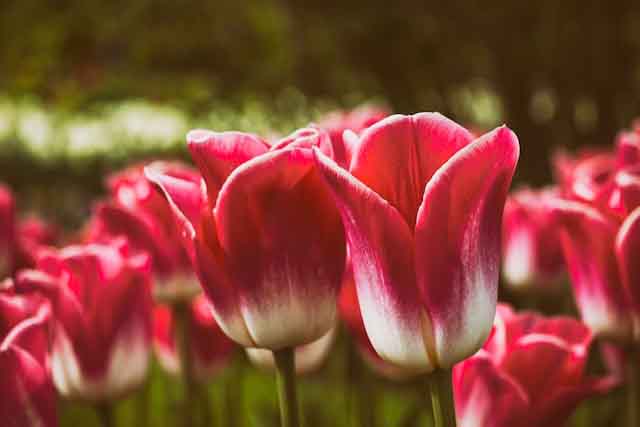
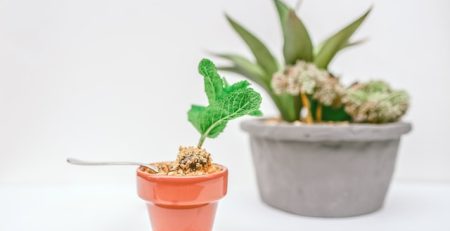

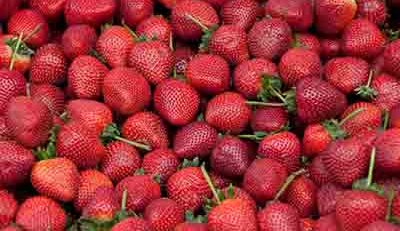
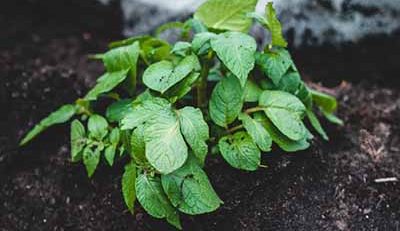
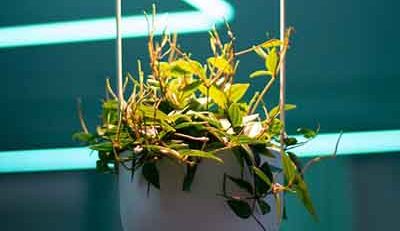
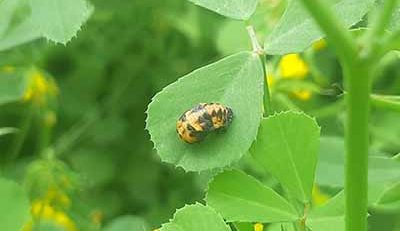




Leave a Reply